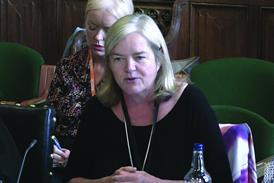Patent - Infringement - Design
HTC Europe Co Ltd v Apple Inc: Chancery Division, Patents Court (Mr Justice Floyd): 4 July 2012
The instant case concerned four patents owned by Apple Inc (Apple): patents 948, 022, 868 and 859 (the patents). Patent 948 was entitled 'Touch event model' and concerned computer devices with inputs which were multi-touch enabled. Multi-touch devices of various kinds had been known since the early 1980s and they had become popular commercially some years prior to the priority date. The 022 patent was entitled 'unlocking a device by performing gestures on an unlock image'. It was concerned with the provision of a user interface on a touch screen device, which enabled the user to change the state of the device by dragging an image over the screen. The invention had been commercialised by Apple as the slide to unlock feature of its iPhone. The 868 patent was a portable electronic device of photo management.
Patent 859 was entitled 'Portable radio communication apparatus using different alphabets'. Apple brought the instant action alleging infringement of the patents and contended that the use, in HTC's smartphones, of touchscreen technology, including the 'slide to unlock' icon, infringed the patents. Five HTC devices were in issue. Each ran an operating system called Android 2.3. Apple's case of infringement depended on its assertion that HTC's 'Android 2.3', in providing a flag called 'FLAG_SPLIT_TOUCH', provided a flag which worked in the same way as patent 948’s exclusive touch flag. HTC contended that the patents were invalid. Claim one of Apple's claim related, inter alia, to the method for handling touch events at a multi-touch device. Clause (vi) of claim one related to the method of 'selectively sending one or more touch events, each touch event describing a received touch, to one or more of the software elements associated with the one or more views at which a touch was received based on the valued of the multi-touch and exclusive touch flags' (for the issues on infringement see [56]-[68] of the judgment). The instant matter was the determination of the claim.
The issues for determination were, inter alia: (i) whether HTC had infringed the patents; and (ii) whether the patents were invalid for obviousness. In particular, it fell to be determined, inter alia, whether Android 2.3 infringed Apple's patents. Apple submitted that Android 2.3 selectively sent touch events, at Window level. HTC contended that the method of Android 2.3 did not infringe claim one because there was no selective sending of events. The principal dispute on construction in respect of patent 859 concerned the meaning of 'alphabet memory means for storing a multi-lingual alphabet comprising sections with alphabetical notation for each language' in the claim. It was contended by HTC that 859 was invalid for obviousness because the relevant language selection method was present in an existing phone, MT900, which had been launched in 1992. In respect of patent 022, the issue was whether it was infringed by the Arc mechanism but not infringed by the other unlock mechanisms in HTC devices. In respect of patent 868, the issue was whether HTC’s devices infringed the patent by performing 'in response to the display of a previously hidden edge'.
The court ruled: (1) In the instant case, on the true construction of claim 1, Android 2.3 did not infringe the claim. The skilled reader would understand by reference to the teaching of the specification that the words were there to indicate that each view had a flag and that the flag indicated the properties of that particular view. It followed that patent 948 was not infringed by the HTC devices. Claim 022 was infringed by the Arc mechanism but not infringed by the other unlock mechanisms. In respect of patent 868, HTC’s devices did not do anything 'in response to the display of a previously hidden edge'. They did not infringe, therefore, in full-screen mode. The steps in the HTC gallery did not do anything in response to the display of a previously hidden edge.
There was, therefore, no infringement in zoomed-in mode either. The claims in respect of patent 859 had all been drafted at a much higher level of generality. That patent was concerned with giving the user the ability to select a language. When a particular language was selected, the alphabet for that language would come from the section of the multilingual alphabet with the characters for that language. There was no requirement for, and the skilled person would not understand from the patent that there was any point in, a separate and distinct set of characters for each language. However, all the HTC devices accused of infringement of patent 859 fell within the scope of the 859 (see [49], [64], [270], [272], [314]-[316], [363] of the judgment).
Patents 948 and 868 were not infringed by HTC's devices. Patent 022 was infringed by the Arch mechanism but not infringed by the other unlock mechanism. Patent 859 if valid, would have been infringed by the HTC devices (see [363] of the judgment). In respect of the validity of patents, the critical question on obviousness was whether the skilled person would see that the way of dealing with the need identified would be at system level, or whether the skilled person would consider that the way to do it would be to send the events to the application software and consider that his work was done (see [70], [78] of the judgment).
Applying settled law to the instant case, the inventive concept in respect of patent 948 was obvious in the light of common general knowledge. The skilled team tasked with designing an operating system for a multi-touch device would arrive at the invention by the routine application of common general knowledge design principles. It followed that claim one of 948 was obvious in the light of the common general knowledge and, therefore, invalid. In all the circumstances, claim one of patent 022 was obvious. Patent 868 provided a novel method of manipulating a zoomed image involving gestures having different effects. The method could not properly be described as a computer program as such, or the presentation of information as such.
Accordingly, none of the claims were obvious and patent 868 was valid. The inventive concept in respect of patent 859 was rendered obvious as those features were present in the MT900 language selection method. It followed that patent 859 was invalid (see [87], [88], [231], [279], [280], [350], [357], [363] of the judgment).
Patents 948, 022 and 859 were invalid for obviousness. Patent 868 was valid (see [363] of the judgment). Kirin-Amgen Inc v Hoechst Marion Roussel Ltd; Hoechst Marion Roussel Ltd v Kirin-Amgen [2005] 1 All ER 667 applied; Synthon BV v Smithkline Beecham [2006] 1 All ER 685 applied; Pozzoli SPA v BDMO SA [2007] All ER (D) 275 (Jun) applied; Conor Medsystems Inc v Angiotech Pharmaceuticals Inc [2008] 4 All ER 621 applied.
Simon Thorley QC, Guy Burkill QC and Joe Delaney (instructed by Freshfields, Bruckhaus Deringer) for Apple; Richard Meade QC, Daniel Alexander QC, Michael Tappin QC, Andrew Lykiardopoulos, James Abrahams and Isabel Jamal (instructed by Powell Gilbert) for HTC.



























No comments yet